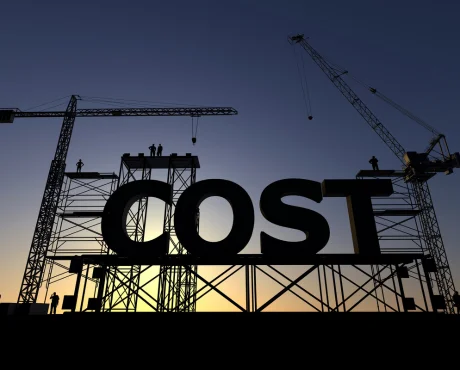Table of Contents
Your supply chain might be efficient, but is it cost-smart? Maybe not and that isn’t the data problem. You probably have more reports than you can act on. The problem is, those numbers are scattered, delayed, or siloed across departments and partners who aren’t working from the same playbook.
Your procurement team is chasing price breaks. Logistics is firefighting delays. Production is adjusting schedules on the fly. But no one sees the full cost impact of these decisions until it’s too late. That’s not a cost visibility issue. That’s a coordination issue.
In this blog, we’re going to unpack:
- Why your biggest cost risks live outside your direct control
- Where visibility breaks down, even with good systems in place
- How collaborative workflows can surface real-time cost trade-offs
- What changes do you need to make in tools, processes, and partner expectations to make this shift stick
If you’re tired of reacting to cost overruns after the fact, this is your chance to rethink how cost control actually works in a modern supply chain.
Why Your Biggest Cost Risks Live Outside Your Direct Control

You can run a lean operation, optimize workflows, track every purchase order, and squeeze efficiency from your own teams. But if your supplier misses a delivery, your logistics partner reroutes unexpectedly, or a geopolitical issue drives up material costs, you’re the one absorbing the impact.
That’s the reality. The most unpredictable, high-impact cost events don’t start inside your factory. They happen in the supply chain, often without warning, and without visibility. Let’s look at where that risk shows up:
1.Supplier Reliability
A Tier 1 supplier experiences a material shortage. They don’t flag it early, and your team finds out only when the shipment’s already delayed. Now you’re rescheduling production, paying overtime, and expediting freight. None of that was budgeted, but all of it affects the cost per unit.
2. Transportation Volatility
Freight prices spike, a carrier changes routes, or a customs delay ties up inventory for days. Logistics may adjust on the fly, but the cost impact shows up later, long after the decision was made.
3. Demand Shifts Without Supplier Alignment
Sales secures a large order or cancels a forecasted one. But if your suppliers aren’t in the loop, you’re either scrambling to fulfill or sitting on unused stock. Both situations have real cost consequences- inventory holding, rushed procurement, or unused capacity.
4. Quality and Rework from Upstream Issues
A subcomponent from a Tier 2 supplier fails quality checks. You catch it late in the assembly. Now you’re reworking finished goods or dealing with returns. The root cause wasn’t yours, but the cost hits your bottom line.
These cases are happening weekly across most manufacturing environments. And they share a pattern: the cost was triggered externally, but you’re accountable for managing the fallout.
This is where traditional cost controls fall short, as cost risks are often hidden, making it difficult to control. And when every partner operates independently, you’re constantly reacting, instead of anticipating.
To reduce these risks, you need more than performance KPIs. You need collaborative visibility into supplier health, logistics capacity, and upstream issues before they impact your production line or margin.
Also Read: Why Predictive Analytics is Best for Cost Cutting in Manufacturing
Where Visibility Breaks Down, Even With Good Systems in Place

You might already have the right tools in place- ERP, MES, procurement software, even a supplier portal. But if you’re still struggling to connect the dots between supply chain activity and cost outcomes, you’re not alone. Because the problem isn’t that data doesn’t exist. It’s trapped in silos, delayed in reporting cycles, or disconnected from decision-making workflows. Here’s how that plays out on the ground:
Systems Don’t Share a Common Cost Language
Your ERP tracks standard costs. Your logistics provider uses their own freight calculators. Procurement logs contract terms in spreadsheets. The result? Multiple versions of cost, none of which reflect the real-time, landed cost of a product. So when teams meet to make decisions, they’re not looking at the same numbers, and often not solving the same problem.
Timing Gaps Block Action
Let’s say a raw material price changes or a shipment is delayed. That update might reach one team instantly, another a day later, and finance not until the next reporting cycle. By then, procurement’s reordered, production’s rescheduled, and the real cost opportunity or risk has already passed.
Teams Don’t Own Costs Together
Operations focuses on throughput. Procurement chases price breaks. Logistics tracks delivery windows. Finance looks at cost-to-serve. All of these are valid goals, but without shared accountability, they often conflict.
For example, procurement may secure a lower-cost supplier, but if that choice adds lead time or increases failure risk, the savings get wiped out elsewhere. That’s not cost reduction. That’s cost displacement.
Suppliers Are Still Treated Like Vendors, Not Partners
In many setups, suppliers are expected to deliver, not to collaborate. That means manufacturers
don’t get early signals when supplier-side issues emerge. There’s no shared view of demand trends, production constraints, or shifting input costs. Without that transparency, there’s no chance to make proactive, cost-saving decisions like rebalancing orders, adjusting timelines, or co-solving problems before they hit the bottom line.
Also Read: ERP Vs Costing Tools: What Manufacturers Should Choose
How Collaborative Workflows Can Surface Real-Time Cost Trade-Offs

In manufacturing, most cost decisions aren’t binary, they’re trade-offs. You can pay more to expedite a shipment or wait and risk a production delay. You can order in bulk for a discount or go lean and risk stockouts. You can source locally at a higher unit price or offshore at a lower cost with longer lead times.
These trade-offs are unavoidable. The question is: how early do you see them, and who helps you make the call?
That’s where collaborative workflows come in, not as meetings or messages, but as structured, real-time exchanges of operational context that let everyone involved understand the cost impact of their choices.
Here’s what that looks like in practice:
1. Shared Demand Signals Between Procurement and Suppliers
Instead of sending forecasts as static spreadsheets, manufacturers share rolling demand updates through a shared portal or planning tool. Suppliers respond with lead time changes, pricing shifts, or capacity constraints.
Result: You see cost-impacting constraints before issuing a PO, not after delays hit production.
2. Joint Scenario Planning Across Logistics and Operations
Let’s say a port delay is announced or fuel prices spike. A collaborative workflow enables logistics and operations to model various alternatives, including rerouting via rail, adjusting production dates, and delaying shipments. The system maps cost vs. delivery trade-offs in real time.
Result: You don’t just react to disruption. You make cost-smart decisions backed by complete insight.
3. Real-Time Alerts When Cost Thresholds Are Exceeded
With shared access to production costs, freight charges, and supplier prices, alerts can be set when predefined cost thresholds are breached. When a supplier price increase or logistics change pushes a product over margin targets, the right people are looped in immediately.
Result: Cost exceptions aren’t discovered at month-end. They’re addressed when they still can be reversed.
4. Multi-Party Collaboration During Production Planning
Instead of operations planning in isolation, the process includes input from procurement, finance, and key suppliers. As constraints or cost changes are raised, they’re factored into the plan in real time, not escalated after orders are locked in.
Result: You prevent the classic cycle of firefighting, reorders, expedited shipping, and unplanned overtime.
When collaboration is built into your workflows not added as an afterthought, cost decisions become faster, more informed, and less reactive. It also builds a culture where teams and partners stop optimizing for their function and start optimizing for total cost impact.
That shift doesn’t just save money. It prevents waste of time, effort, and margin that no dashboard can fix once it’s already spent.
What Changes You Need to Make: Tools, Processes, and Partner Expectations?
If you’re serious about closing the visibility gap, it’s not just about new software. It’s about redefining how your teams and supply chain partners interact with cost data and with each other. Here’s where to start.
1. Upgrade Systems with a Focus on Shared Cost Context
Most manufacturers already use ERP, procurement, or logistics platforms but those tools weren’t built for shared ownership. You don’t need to rip them out. You need to layer in tools that bridge the gaps:
- Use supply chain collaboration platforms that integrate with your existing systems
- Standardize how costs are captured- unit cost, landed cost, freight cost across systems and parties.
- Create shared dashboards where internal teams and key suppliers see the same inputs and outcomes.
The goal isn’t more data. Aligned data, shared across the right teams, exactly when it’s needed.
2. Redesign Internal Workflows Around Cross-Functional Decision-Making
Cost decisions shouldn’t be reviewed at the end of a project, they should be part of every weekly operational rhythm. That requires:
- Including procurement, finance, and logistics in production planning meetings
- Establishing fast-track loops for cost-impacting decisions (e.g., expedite or delay orders, swap suppliers)
- Empowering teams to flag cost trade-offs early, not escalate them after damage is done
When everyone owns the cost together, fewer things slip through the cracks.
3. Rethink Supplier Engagement from Compliance to Collaboration
Your suppliers may not be ready to share cost data, yet. That’s a relationship issue, not a technical one. Start small:
- Share demand trends earlier, and ask for input on risks or pricing
- Work side by side with your suppliers using shared calendars, tools, or strategy sessions.
- Build incentives into contracts for proactive communication, not just on-time delivery.
Suppliers who understand your goals and feel like partners, not vendors, become early warning systems, not cost liabilities.
4. Make Cost Visibility a Performance Metric, Not Just a Finance KPI
If visibility only lives inside finance reports, it stays backward-looking. Make it part of how you measure operations and supplier health:
- Track cycle times to cost alerts and resolutions
- Report cost exceptions by root cause: internal, supplier, logistics
- Include cost accuracy and response time in supplier scorecards.
This shifts cost from something that’s reviewed to something that’s managed in real time.
Final Take
If your teams are still managing cost reactively through variance reports, delayed alerts, or end-of-month analysis, you’re not just behind. You’re exposed.
The manufacturers that are staying ahead in 2025 aren’t simply investing in better tools. They’re changing how they work. They’re turning their supply chains from a series of handoffs into a network of shared decisions, with suppliers, logistics partners, and internal teams all aligned around the same goal: making smarter choices before cost is committed.
That’s what real visibility looks like. And that’s what real collaboration delivers. It’s not about asking for more data. It’s about demanding better timing, better alignment, and better control across your entire value chain.
Organizations that cultivate the data infrastructure, analytical capability, and executive alignment to integrate predictive insights effectively will outpace competitors. In a world where managing costs defines competitiveness, predictive analytics isn’t optional, it’s essential.





